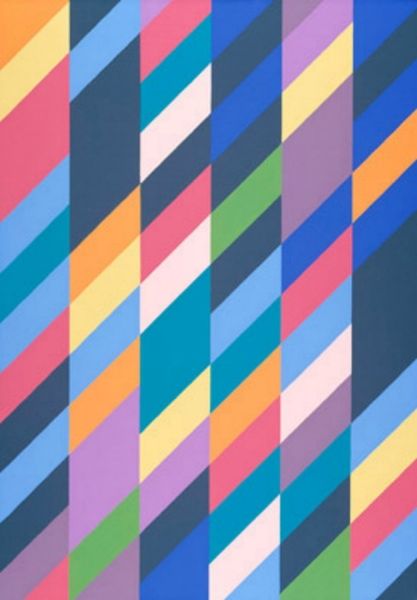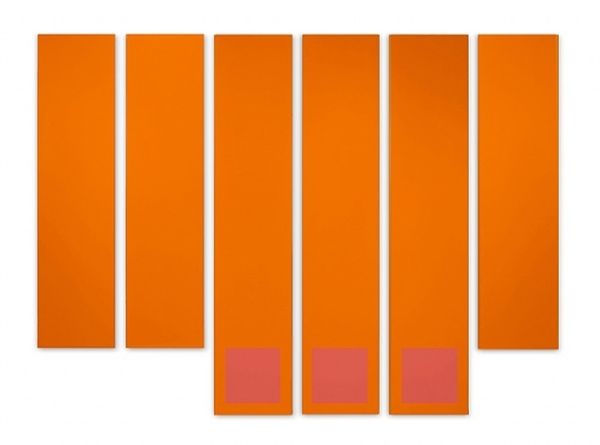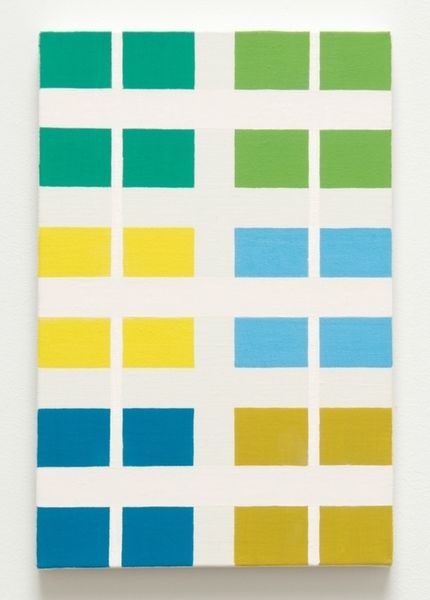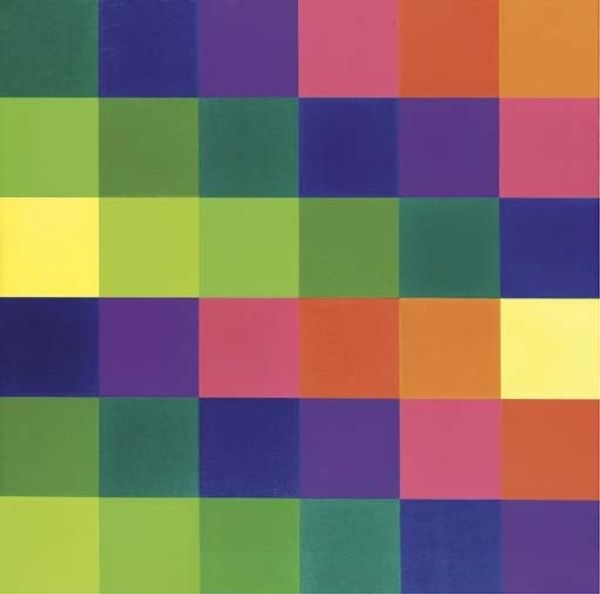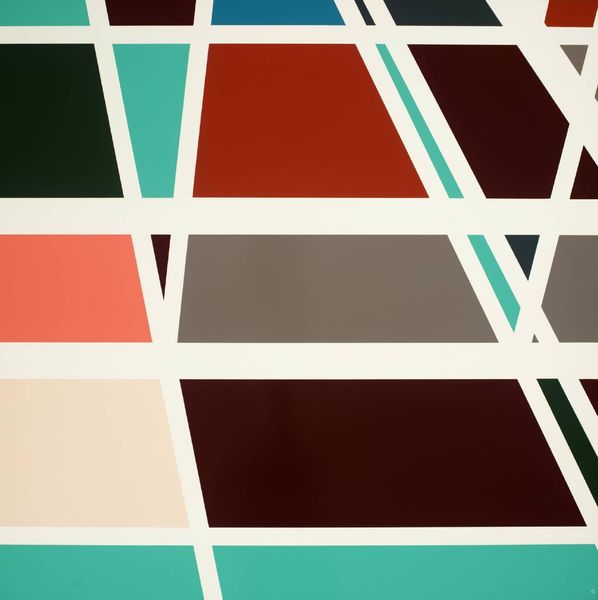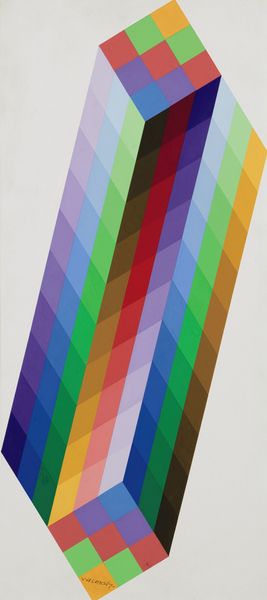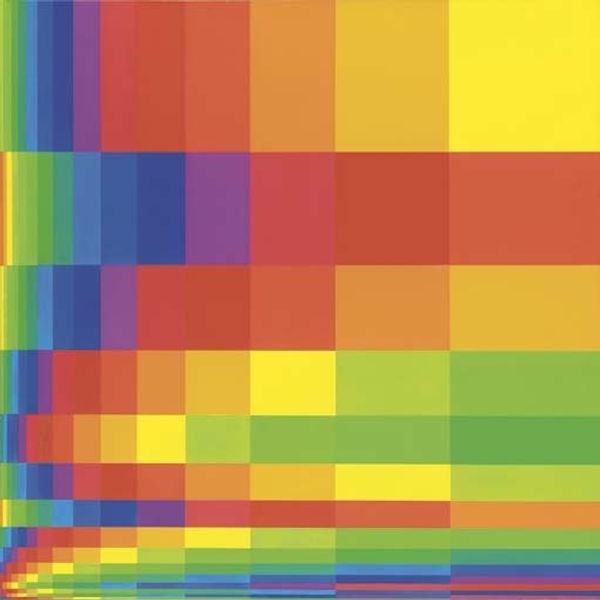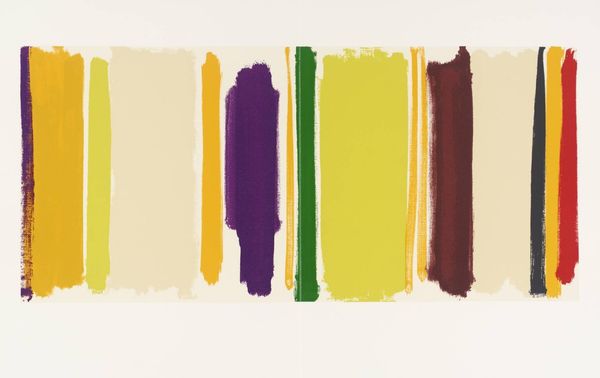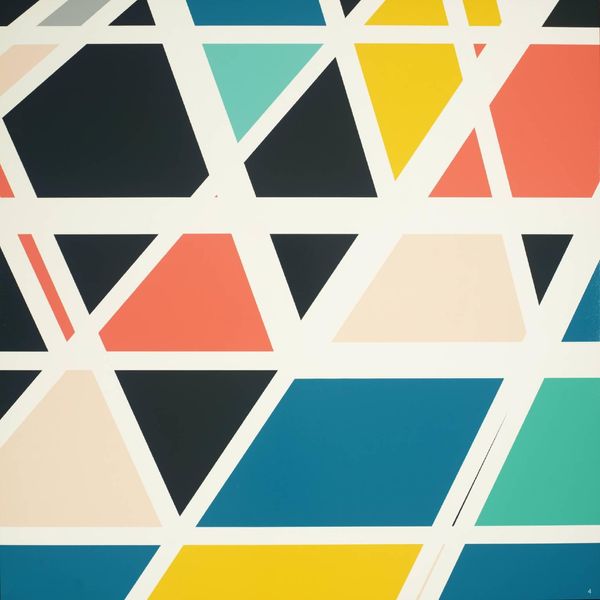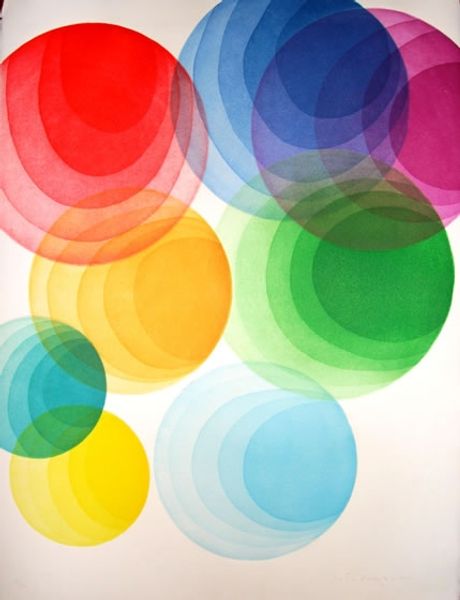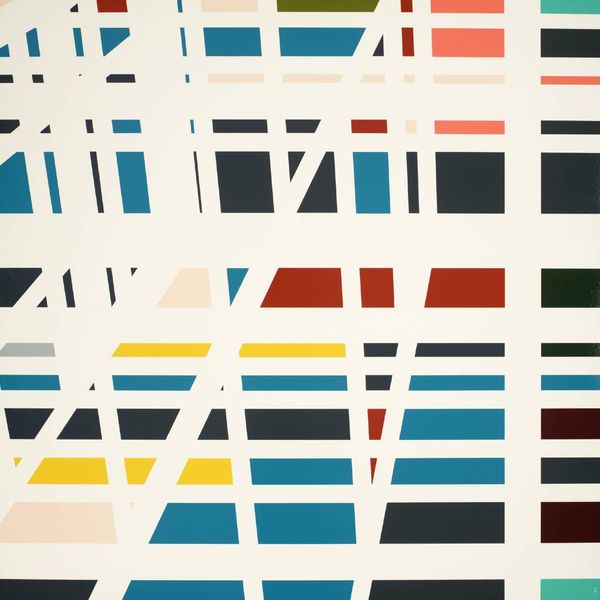
Copyright: (c) Ellsworth Kelly, all rights reserved
Curator: This is Ellsworth Kelly's "Spectrum", created in 1973. It's an acrylic and ink work, showcasing the artist's distinctive engagement with color and form. Editor: My first thought? It feels incredibly calming. The arrangement of colors is like a visual mantra. Simple, yet it holds a powerful resonance. Curator: Kelly's works are often associated with Minimalism and Color Field painting. He aimed to create a purely optical experience, free from symbolic content, which was an active intervention into art historical practices of that time. How might that artistic choice translate, politically, into wider movements of deconstruction? Editor: Right. There's a definite feeling of reduction here—stripping away layers to get to the essence of color itself. It speaks to that post-war, post-industrial sensibility of questioning established norms and ideas. Perhaps Kelly, by isolating colors, encourages us to individually examine how we perceive and interact with our environments. Curator: Precisely. The institutional critique is subtle, but it’s there. Kelly forces the viewer to confront the act of seeing itself. Museums often dictate what and how we should appreciate art, but here, the individual's own sensory perception becomes paramount. It removes much of the narrative structure that guides conventional readings of paintings, and lets the "content" of the painting operate, as Rosalind Krauss put it, outside the logic of the narrative. Editor: I think there's something about the almost manufactured perfection of those colors, like carefully coded data. Kelly created art out of serial reproduction—how could such visual strategies influence our notions of individual agency, within ever-expanding regimes of state bureaucracy? Curator: His method, stripping away the artist's "hand," mirrors the depersonalization that accompanied the rapid expansion of capitalism at that time. So, while seemingly devoid of overt political messaging, the painting mirrors underlying socio-economic changes. Editor: Exactly. It reveals anxieties about the impact of growing capitalist systems on selfhood and creativity. Despite its deceptively "neutral" facade, "Spectrum" prompts conversations about art’s purpose, both historically and for contemporary viewers. Curator: I concur. What seemed, initially, as an aesthetic exercise contains so many more embedded levels of socio-political commentary. Editor: Indeed! A poignant study in how seemingly apolitical forms can provoke profound reflection.
Comments
No comments
Be the first to comment and join the conversation on the ultimate creative platform.
